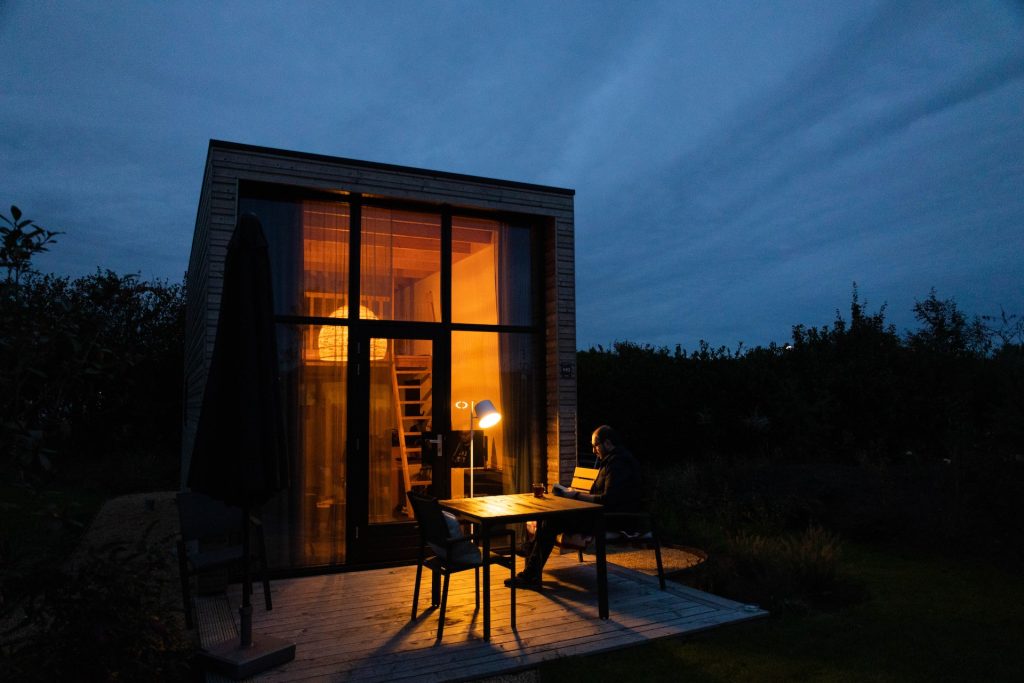Overconsumption and waste are the two killers of the planet, and we, as humans, are experts at them. Larger households not only take more energy to heat and cool, but they also produce more waste.
The way we treat our planet has an enormous effect on its longevity.
Living in Tiny houses seems sustainable and affordable, especially among millennials. At no more than 500 square feet, these micro abodes offer comfort without sacrificing the planet. Owning a minimal tiny house has many long-term benefits, like energy bill reduction, a smaller carbon footprint, and more.
People who live in tiny homes have reduced their energy consumption by about 45 percent. Tiny homes require less water, heat, and air and are massive energy savers. So, in most utility bill cases, they will be cheaper than traditional-sized homes.
Among the reasons why people move to a tiny home are:
- Some want to move to a more rural area and create a peaceful and tranquil environment.
- Some others might want to reduce the amount of money they are spending on their home.
- Others want to reduce stress by having less stuff.
Tiny homes are made with eco-friendly materials, like bamboo, straw, Sheep’s wool (for insulation), and Precast concrete. Using this kind of environmentally friendly materials will reduce the dependence on nonrenewable resources like natural gas and oil.
Some people are even turning RVs or cabins in the woods into tiny homes, thereby helping with issues like deforestation or carbon emissions. Using natural insulation materials will also help lower your monthly energy bills.
Ways you can make innovative tiny houses more sustainable:
- Switching to Solar Energy. Solar energy is clean, green, and sustainable. And sunlight is abundant. Switching to Solar energy is one of the best ways to save the planet.
- Installing a Composting toilet. A composting toilet uses less than a pint of water per flush. It relies on natural decomposition and evaporation to recycle human waste.
- Using Natural lighting. Boosting up natural lighting in your tiny home can make your house less dependent on electricity and eco-friendly.
- Installing a low-flow showerhead. A low-flow showerhead reduces your water consumption by 40% or more.
- LED lighting. LED lighting is one of the most energy-efficient, requiring up to 80% less energy than regular incandescent lighting.
- Eco-friendly insulation. Insulation can lower heating and cooling costs by around 20%. Opt for biodegradable materials that can help keep your house cooler in the summer and warmer in the winter.
- Recycled materials. Use materials like recycled glass tile or reclaimed wood. By avoiding concrete, you are more eco-conscious, as it is one of the most carbon-intensive materials on the planet.
- Rainwater collection system. With this system, water is collected from the roof area and sent from the roof drainage to a tank, where it is accumulated for later use.
- Renewable flooring. By avoiding hardwood flooring and using cork or bamboo for your tiny house, you are not only making it more eco-friendly but also renewable.
- Energy-efficient appliances. Your appliances are a considerable portion of your home’s overall energy consumption, so if you’re shopping, go for eco-friendly appliances.
Generations Tiny Homes offers smart home functionality at the most affordable prices while delivering nationwide. We have delivered our tiny homes to clients from coast to coast. Contact us to learn more or start your tiny house journey today!


